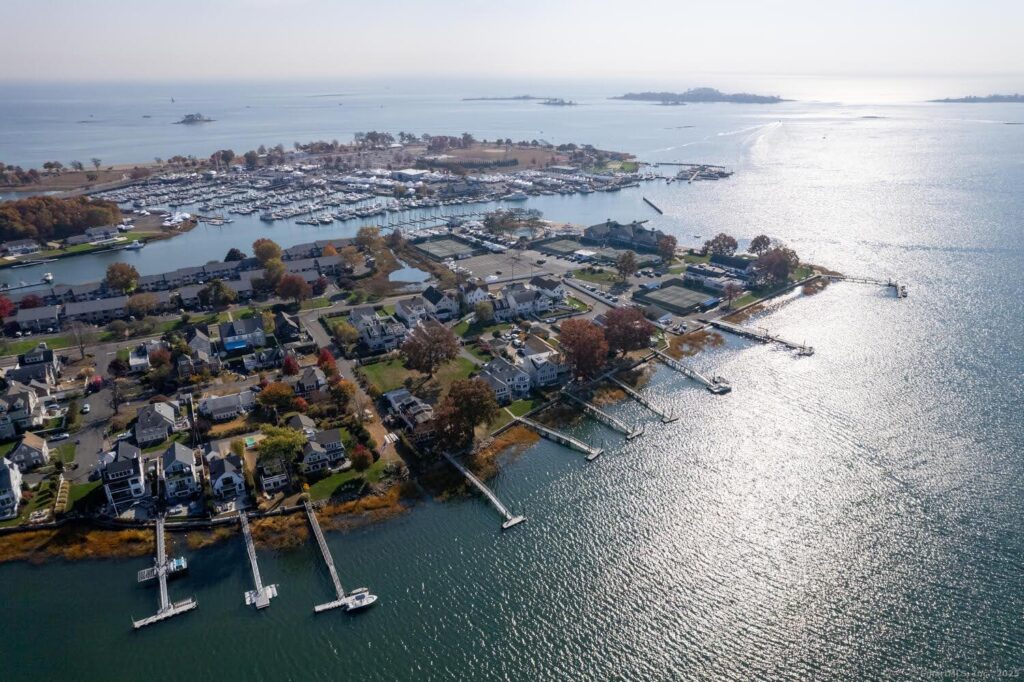May 19, 2025
Norwalk’s water system plays a vital role in the health of the city’s homes, businesses, and environment. From wastewater management at the Water Pollution Control Authority to everyday conservation reminders, Norwalk is taking active steps to steward its water resources, especially as climate conditions grow more unpredictable.
Understanding Norwalk’s Water Supply
Unlike many communities that rely solely on surface water, Norwalk’s water supply is primarily sourced from surface reservoirs, with supplemental groundwater from aquifers. These aquifers require special care and long-term planning to preserve. And with drier summers and heavier rainfall events becoming more common due to climate change, the city continues exploring new ways to conserve water, improve infrastructure, and engage the public.

Why Water Sustainability Matters in Norwalk
Water challenges in Norwalk aren’t one-size-fits-all. While the city primarily relies on surface reservoirs, protecting groundwater sources remains critical for long-term resilience. Overdrawing aquifers can lead to lower water tables and future supply risks.
Every gallon saved helps reduce the burden on treatment facilities, stormwater systems, and natural habitats. For residents, conserving water helps:
- Lower monthly utility bills
- Reduce wear on appliances and plumbing
- Support local resilience during droughts or water advisories
- Ensure a reliable supply for future generations
- Sustainability isn’t just a citywide goal—it’s a way for every household to make a measurable impact.
- Ongoing Conservation Efforts
The Norwalk Water Pollution Control Authority (WPCA) manages over 200 miles of sewer pipelines and oversees the treatment of millions of gallons of wastewater daily. It works alongside other city departments to ensure the water system is efficient and resilient.
Exciting upgrades are already underway:
- Supervisory Control and Data Acquisition (SCADA) system modernization to improve real-time water monitoring
- Pump station renovations to support stormwater and wastewater flow
- Sewer rehabilitation projects that reduce leaks and groundwater intrusion
These efforts help reduce system strain, protect the Norwalk harbor, and prepare the city for future water demands.
Conservation Starts at Home
While citywide upgrades help build the foundation for long-term sustainability, individual households play a crucial role in supporting Norwalk’s water goals. Every faucet turned off and every leaky pipe repaired adds up over time. In fact, residential water use accounts for a significant portion of daily demand, so conservation at the local level can have a real, measurable impact.
Residents can support Norwalk’s water conservation goals by making smart choices at home. Small steps like installing low-flow fixtures, using rain barrels for irrigation, and fixing leaks promptly can significantly reduce household water use.
While Norwalk’s WPCA focuses on wastewater management, residents can check with local utilities like South Norwalk Electric and Water (SNEW) for information on any available rebates or efficiency programs that may help reduce overall resource consumption.
Most importantly, residents can also take simple, everyday steps to reduce waste and keep water resources healthy:
- Taking shorter showers
- Running the dishwasher and laundry only when you have a full load
- Fixing leaks in your home
- Installing low-flow toilets in your home or adding a water displacement device
- Shutting off the faucet while brushing teeth and soaping up in the shower
- Collecting rainwater
- Sweeping the patio and driveway instead of using a hose
- If everyone made small changes citywide, it could make a significant impact on our overall water demand.
Citywide Conservation Leadership
Norwalk’s Conservation Office plays a vital role in protecting water resources. The office administers and enforces the city’s Inland Wetland Regulations, which are designed to safeguard watercourses and wetlands from potentially hazardous land uses-especially in public drinking water supply areas. The Conservation Office also provides recommendations on natural resources and open space plans, ensuring that water quality and environmental health remain central to city planning.
Protecting the Norwalk Coastline and Long Island Sound
Norwalk is committed to protecting and improving water quality in Long Island Sound. The city’s Plan of Conservation and Development (POCD) 2019–2029 outlines strategies for managing stormwater, preserving wetlands, and enhancing natural buffers to reduce pollution and runoff into the Sound. These efforts support both environmental health and recreational opportunities for residents and visitors. View our FAQs for more information.
“The city’s POCD specifically addresses the need to balance growth with environmental protection, emphasizing water resource management and conservation as key priorities for Norwalk’s future.”
Looking Ahead: A Sustainable, Water-Smart Norwalk
As dry weather alerts and seasonal restrictions continue, Norwalk is committed to keeping residents informed and involved. The city will continue upgrading systems like the WPCA and promoting conservation campaigns across neighborhoods.
Through thoughtful planning and active community participation, Norwalk is building a sustainable future for its water. By doing our part—from reducing indoor water use to supporting large-scale infrastructure upgrades—we can ensure a stronger, more resilient Norwalk for generations to come.
Stay up to date on Norwalk’s water-related projects and plans by visiting the Harbor Management Plan and subscribing to our Norwalk Tomorrow newsletter below.




